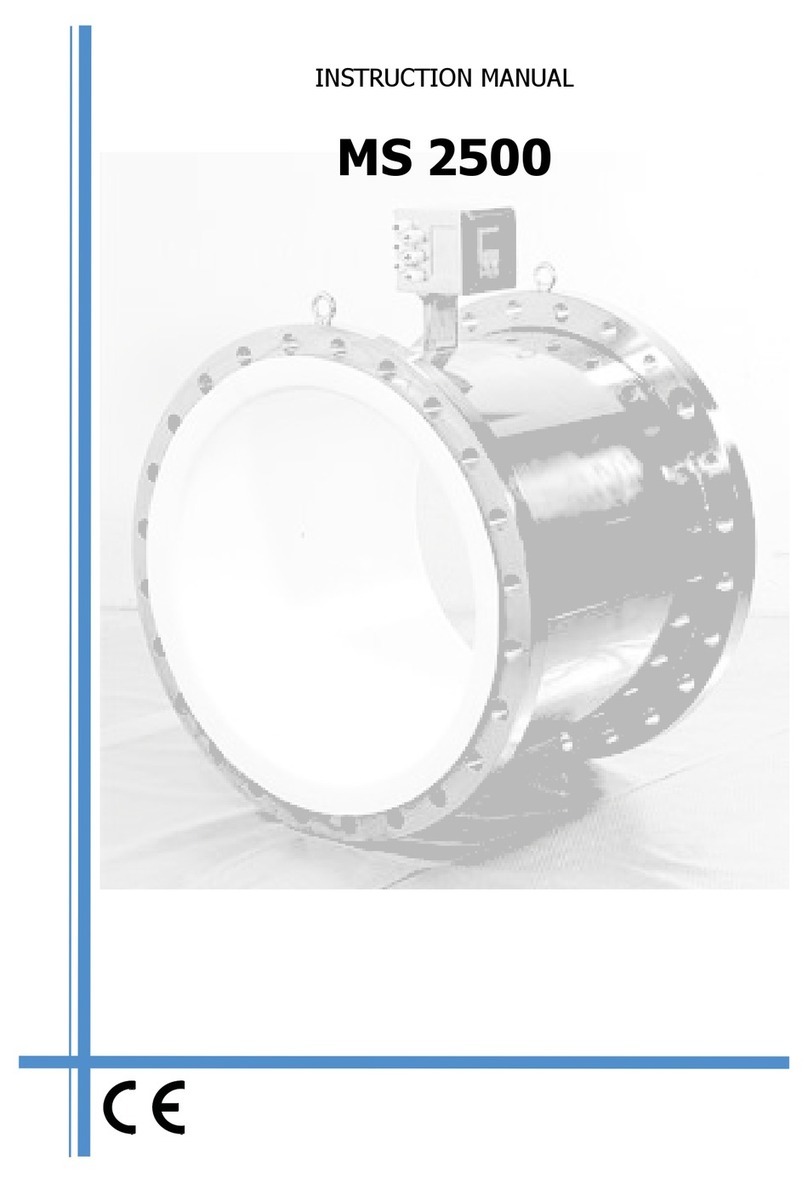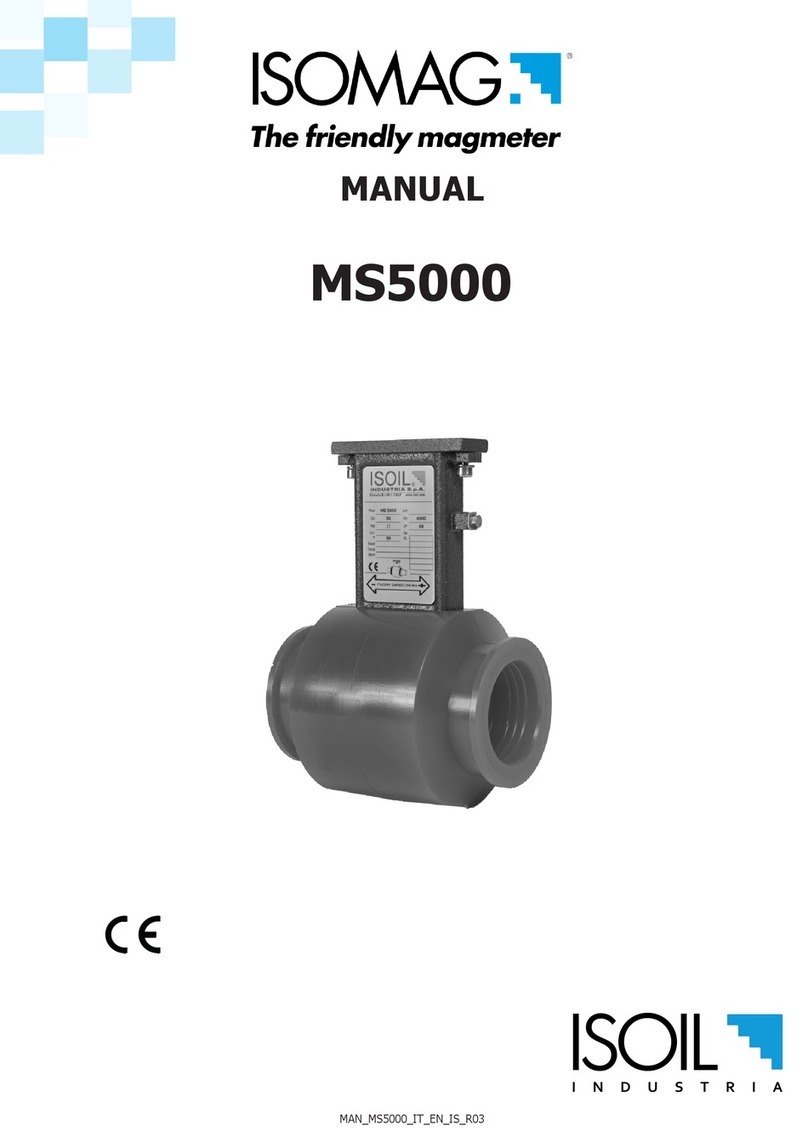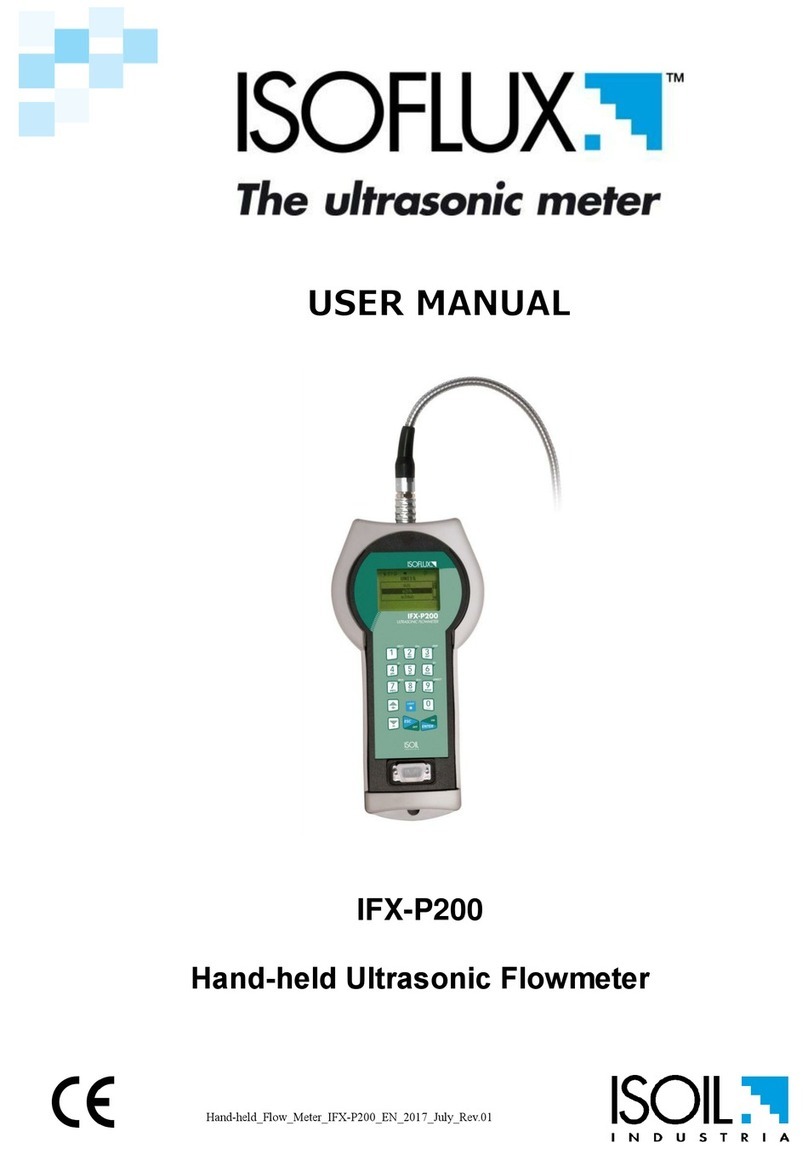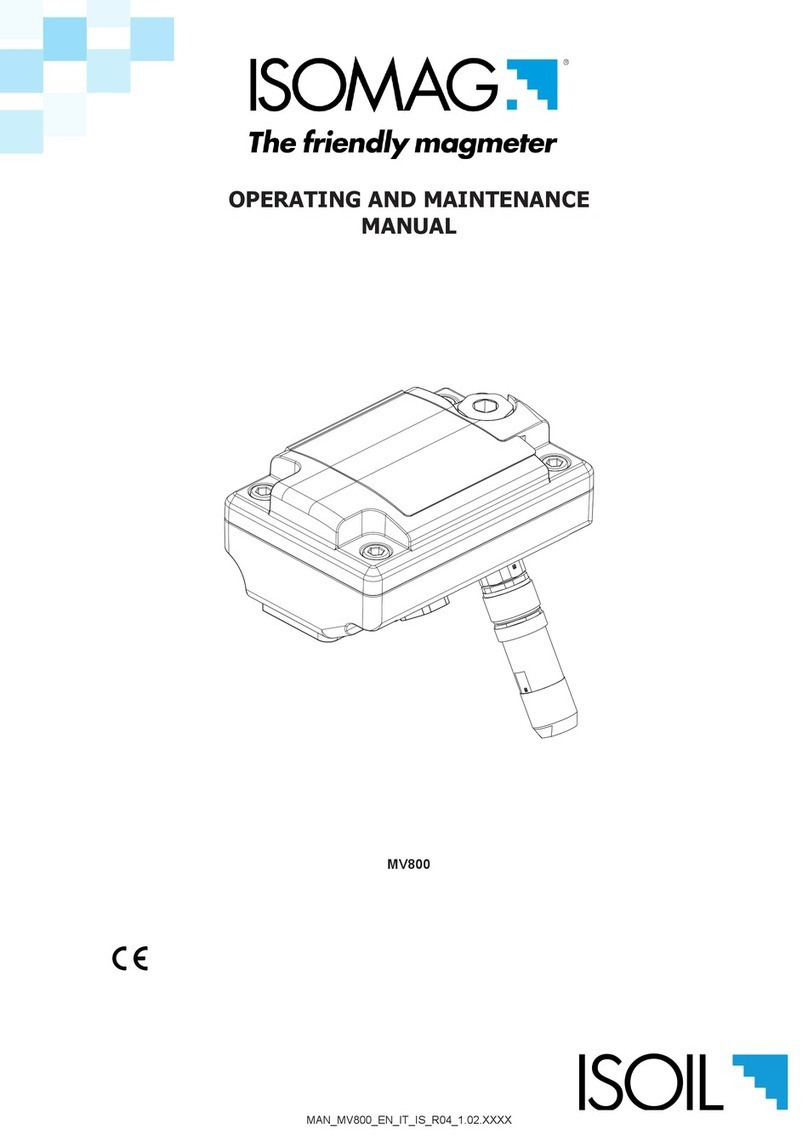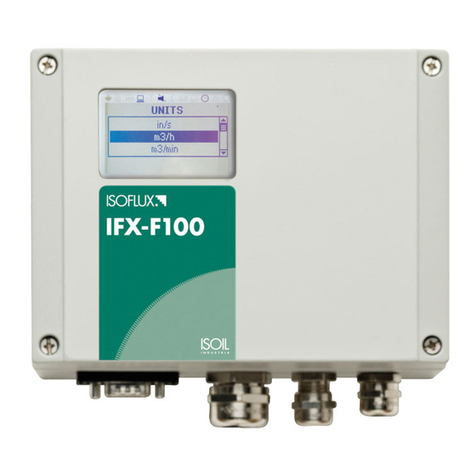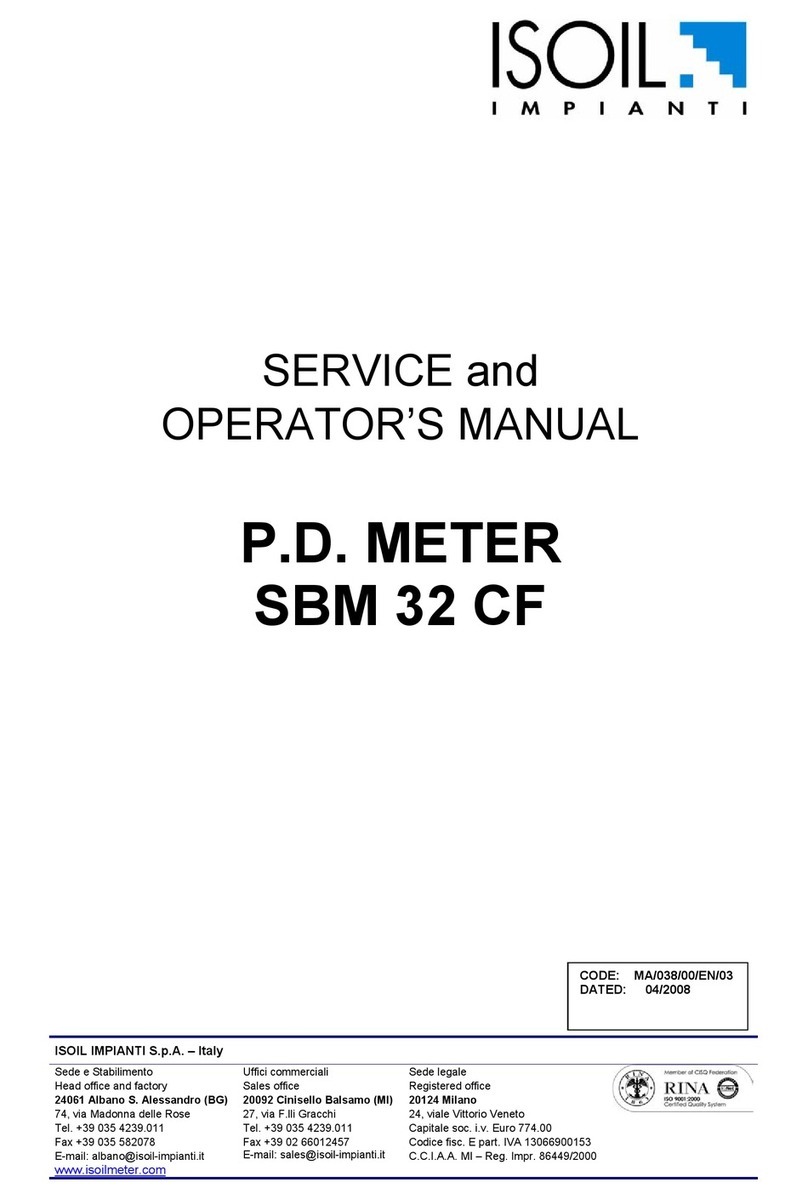
Page 6 ISOIL IMPIANTI S.p.A.
MA/027/00/EN/07 All rights reserved. Reproduction of this manual is forbidden.
CAUTION
All parts under pressure must be released before disassembling the
meter or its accessories for adjustment, inspection, servicing or
substitution of its components.
Also make sure that all electric or electronic part, if present, are
disconnected from its power supply.
3 Installation
3.1 Precautions
The installation of the meter counter does not require any special procedure; just pay
attention to the following points:
The meter counter must be installed horizontally; for other applications a vertical
arrangement is provided. In both cases the rotor axis must be kept horizontal.
All the meter’s openings are protected with covers when shipped; those must not be
removed until the meter is installed on the piping
Before the installation of the meter, it's suggested to clean thoroughly the piping to
remove dirt, crusts and other foreign particles.
Piping should not exercise strain on the meter. The meter is designed for overhang and
supports should be provided only on the adjacent pipes.
Leave space enough around the meter to ease access for adjustment, servicing and
disassembly. The counter, if present, must be easily readable.
The meter must always remain full of product; it's suggested to install the meter so that
it remains always under the main line.
The line upstream the meter must always remain full of product to avoid that air enters
the meter's measure chamber; if the pipe arrangement allows reversal flow, a non-
return valve must be installed.
Flow through the meter must be regular and uniform; pulsating and irregular flows must
be avoided.
It is recommended to install flow limiting valves downstream of the meter if the flow rate
can reach values higher than the maximum allowed for the meter.
If the line pressure can reach values higher than the maximum allowed, automatic
safety valves must be installed in adequate places.
To protect meter from damages due to foreign particles in the liquid, a suitable strainer
with a correct mesh number (40 mesh for oil, 60 mesh for diesel oil, 100 mesh for
gasoline) must be installed upstream the meter.
In case the rate of flow through the installation exceeds the meter maximum rated capacity,
it is advisable to use a flow limiting valve, which must be installed downstream the
same meter.
